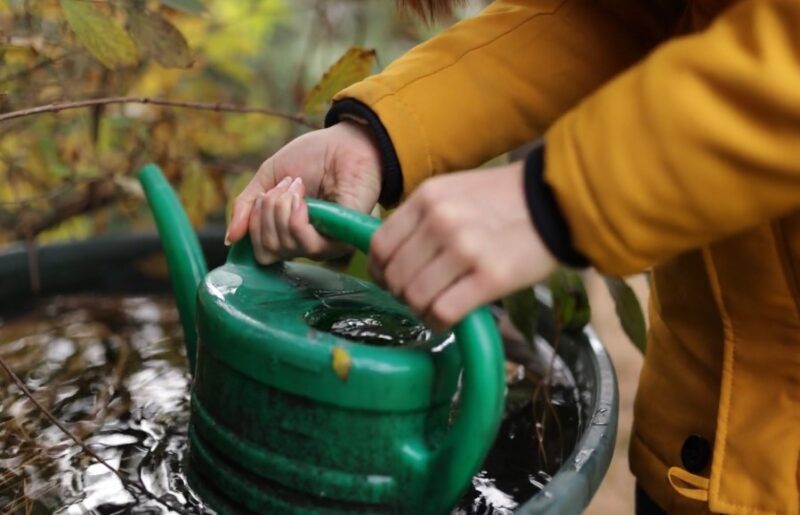Rainwater harvesting is a sustainable practice that involves collecting and storing rainwater for various uses.
Understanding these techniques and their benefits can empower you to take charge of your water consumption.
Learning about rainwater harvesting can also inspire community-wide initiatives and foster a sense of responsibility towards conserving this valuable resource.
1) Rain Barrels
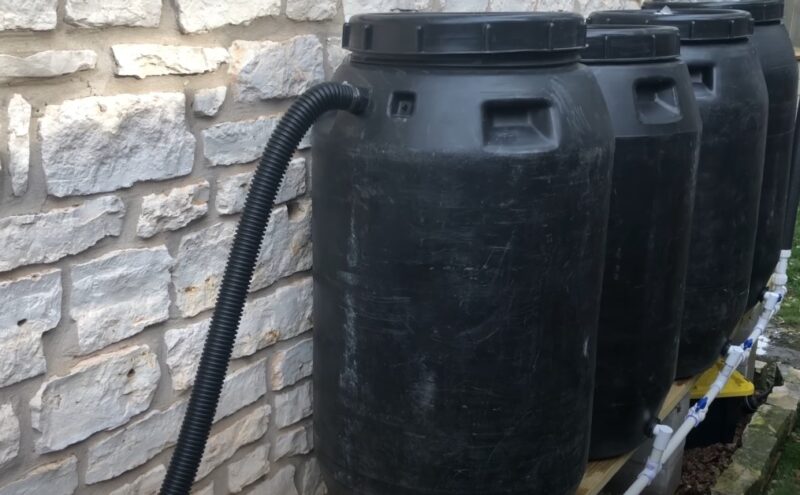
Rain barrels are a popular way to collect and store rainwater from rooftops. They are simple and effective, making them a great choice for homeowners.
Using a rain barrel can help you save money on your water bill. Instead of using treated municipal water for tasks like watering your garden, you can use the free water you collect.
To set up a rain barrel, place it under a downspout. This helps channel rainwater from your roof into the barrel. Most rain barrels have a spigot at the bottom for easy access to the stored water.
Make sure to choose a barrel made of food-grade plastic. This ensures that the water remains clean and free from harmful chemicals. Avoid using barrels made of metal that can rust or wood that can rot.
By using rain barrels, you are also contributing to water conservation. This is especially important in areas that experience water shortages.
Setting up a rain barrel is easy and requires minimal maintenance. Just make sure to clean the barrel periodically and check for any leaks.
2) Water Gardens

Water gardens are a creative way to use harvested rainwater. They combine beauty with practical water use.
You can create a water garden by setting up a pond or a series of interconnected smaller pools. These gardens use plants that thrive in wet conditions, like water lilies and cattails.
Water gardens help manage excess rainwater. They can reduce the risk of flooding by absorbing and slowing down the rainwater flow. This helps prevent soil erosion in your garden.
Your water garden can also become a habitat for wildlife. Frogs, dragonflies, and birds may visit, adding to the natural beauty of your garden.
To keep the water clean, consider using natural filtration. Plants like papyrus and taro help filter out pollutants and keep the water clear. Regular maintenance will ensure your water garden stays healthy and functional.
3) Permeable Pavement
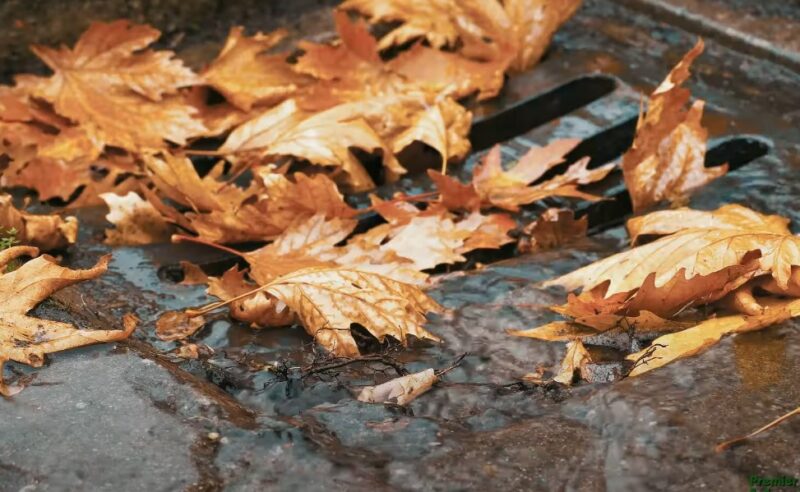
Permeable pavement is a type of surface that allows water to pass through it. This helps reduce runoff and prevent flooding. It uses materials like permeable pavers, pervious concrete, and porous asphalt.
When it rains, the water goes through the pavement and gets stored in a reservoir below. From there, it slowly infiltrates into the soil. This helps recharge groundwater and minimize surface water pooling.
Permeable pavements also help filter pollutants from the water. As rainwater passes through, it leaves behind dirt and debris. This makes the water cleaner by the time it reaches the soil.
These pavements are common in driveways, parking lots, and streets. They are part of green infrastructure, which aims to manage water in an eco-friendly way. You can use permeable pavements in both residential and commercial areas.
4) Green Roofs
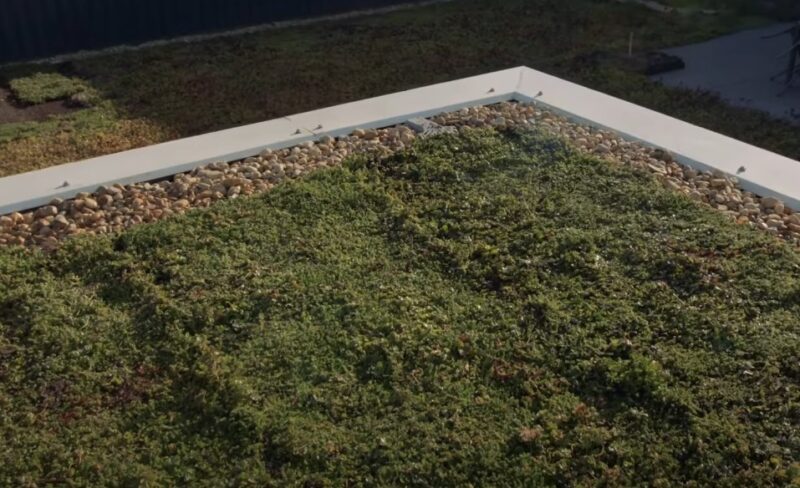
Green roofs consist of a layer of plant material where water gets absorbed like a sponge. These roofs capture rainwater, which slowly evaporates or gets used by plants. This process helps reduce the amount of water that would typically run off a regular roof.
Using a green roof can also help lower building energy costs. The extra layer of plants provides insulation, keeping buildings cooler in the summer and warmer in the winter. This can lead to significant savings on heating and cooling.
Different types of green roofs offer various benefits. Extensive green roofs are lightweight and have shallow soil, usually between 2 to 6 inches. These are ideal for buildings that can’t support heavy loads. They often feature drought-resistant plants like sedums and mosses.
Green roofs also help manage rainwater effectively. By absorbing and holding rainwater, they reduce the pressure on municipal sewer systems during heavy rainfall. This can help prevent flooding and reduce the risk of sewer overflows.
5) Rain Chains
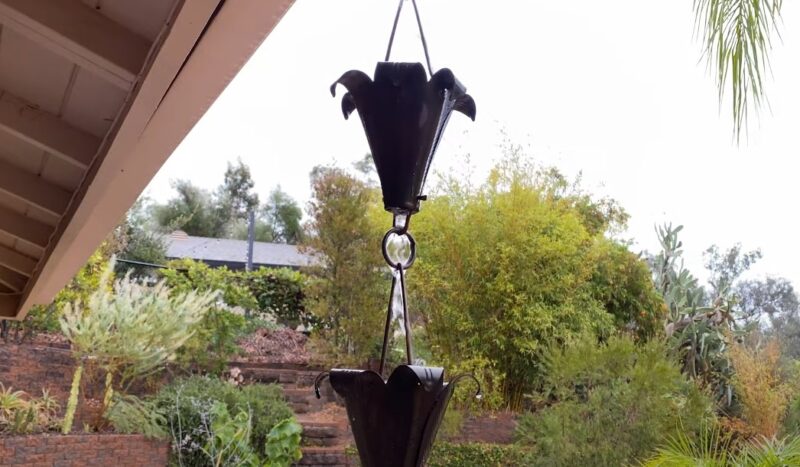
Rain chains are a stylish way to manage rainwater runoff from your roof. Attached to the gutter, these chains guide water down through a series of links or cups.
You can find rain chains made of various materials like copper or aluminum. Over time, copper chains develop a patina, adding a rustic look to your garden.
Rain chains do not just look good. They also reduce water splashing as the water flows down the chain. This helps prevent soil erosion around your house.
Installing a rain chain is simple. You just replace your downspout with the chain. Make sure to secure it properly to handle heavy rain.
These chains also help in rainwater harvesting. You can place a barrel or container at the bottom to collect the water for later use in your garden.
Rain chains are low-maintenance. They need occasional cleaning to remove debris. This makes them a practical and decorative addition to your home.
6) Swales
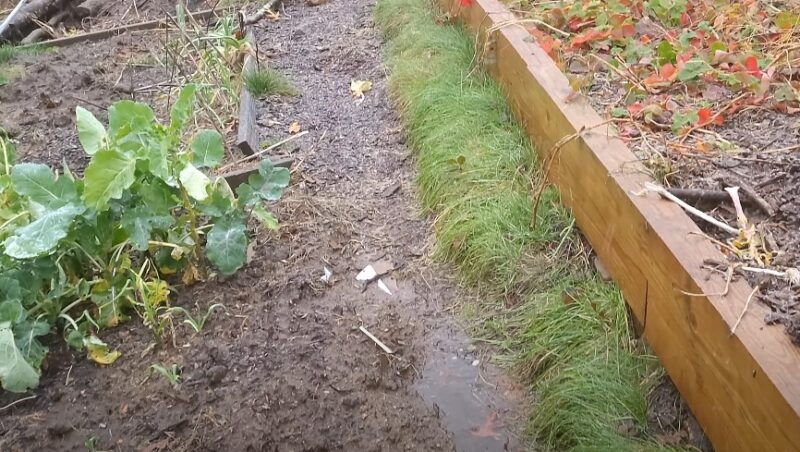
Swales are an effective method for rainwater harvesting. They help capture and store rainwater, reducing runoff and increasing soil moisture. Built by creating shallow trenches along the contour of the land, swales slow down the flow and allow it to soak into the ground.
In constructing swales, the balance between digging out soil for the trench and building up the embankment is crucial. This ensures efficient water capture and helps maintain soil health.
Swales are great tools for preventing flood and drought conditions. By capturing runoff from roads and other hard surfaces, they make sure water is used beneficially instead of draining away.
Swales work well on slopes of 3-15%. They are particularly useful in areas with compact soil, shallow bedrock, or high tables. Using swales in these conditions can improve water infiltration and support plant growth.
Combining swales with other rainwater harvesting techniques can enhance their effectiveness. Utilizing swales requires less plant management and supports the growth of perennials. Install them along the land’s contour to intercept and spread rainwater effectively.
7) Cisterns
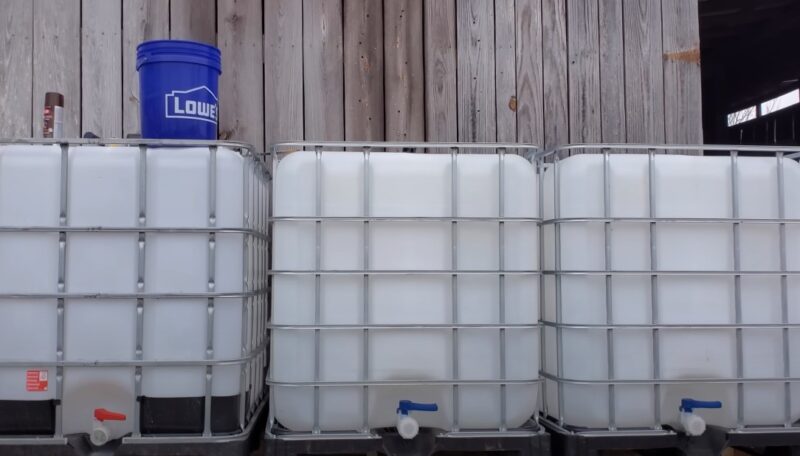
Cisterns are large containers used to collect and store rainwater. They are bigger than regular rain barrels, holding between 200 to over 10,000 gallons of water. This makes them ideal for catching and saving large amounts.
Cisterns are often made from materials like concrete, metal, or plastic. They can be placed above ground or buried underground. The choice depends on your space and preferences.
Using cisterns helps you have a reliable water source during dry periods. It can be used for irrigation, flushing toilets, or even laundry. It reduces your dependency on municipal water supplies.
They need a proper gutter system to direct rainwater from the roof into the cistern. Regular maintenance is important. You need to check for leaks and ensure the water stays clean.
The Bottom Line
By observing rainwater harvesting, you can see its significant impact on saving water and sustaining the environment. It is a simple, practical way to ensure a reliable water supply, help reduce flooding, and conserve a valuable natural resource.
Each of the seven techniques offers unique advantages. From capturing rain on rooftops to using permeable surfaces on roads, there are many ways to collect and use rainwater efficiently. These methods can be customized to fit different needs and environments.
Implementing these methods can lead to substantial improvements in water availability and quality. By integrating rainwater harvesting into your daily practices, you contribute to a sustainable future and ensure a healthier environment for the next generation.

